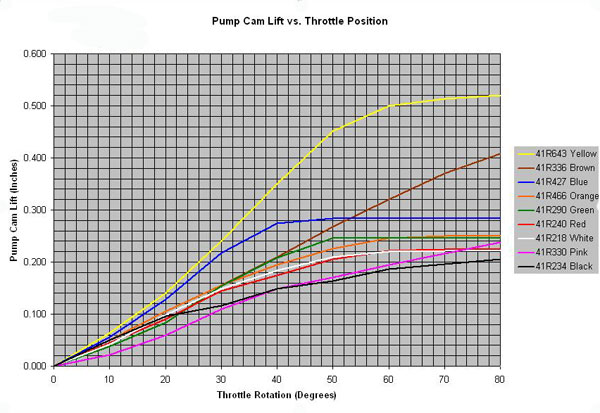As you'll have seen from my previous posts I fitted an Eaton Supercharger to my TR6.
Ok so Moss sell (or used to) the supercharger kit as presetup to run with the TR engine. Of course this is only ever an approximate thing as every engine set up is different.. In particular the engines from the US have a lower compression ratio than those in the UK. There are also differences in camshaft, cam timing, exhaust manifold and ignition timing.. The list goes on...
So any preset system WILL be approximate and WILL need fettling..
This was (is) certainly true for my setup..
Remember the engine block is a UK CP block with a triumph 2500 saloon camshaft (less overlap for the supercharger) and stock exhaust system with a US narrow inlet head so I wasn't surprised when the car ran pretty badly..
First thing that was clear was that it didn't like being cold.. pulling away with part throttle led to backfireing through the inlet.. luckily there is a pop-off valve.. but the bang is loud enough to startly rather unwary (ask my rally co-driver!). There was also significant bogging when the throttle was snapped open.. Sounds like it is running lean.. best to check so out with the AFR meter..
Most classic car people seem to trust plug reading, feel and reading tea leaves as a way to tune engines. I like something more analytical (I am a scientist after all) so I have an AFR meter. This allows you to monitor what is coming out of the tail pipe in real time alongside RPM and potentially manifold vacuum. These data together let you know what is going on inside the engine under different driving conditions.. I used this system very successfully to get the PI working so I thought.. lets try with the supercharger..
Well the first run confirmed my fears. Opening the throttle led to a transient period when the mixture when super lean (>20:1 air:fuel where the optimum should be 12:1-14:1 approx). (See graph below). This super lean mixture only occured when pulling away from standstill. You can even see at about 18 seconds where I feathered the throttle to preven the car bogging completely (with the mixture becoming slightly less lean. The rest of the trace where I pull through 2nd, and 3rd gears isn't bad, infact it looks like it is running too rich. You can however still see slight lean spikes as I change gears but they are within the working window (e.g. AFR <14:1). Happily, even with this bog in first gear the time taken to get from 1000 to 4000 rpm in first is pretty much on a par with the best I got from the PI system.

There were some other issues in other areas, but without sorting this pedestrians were going to have heart attacks from the backfires whenever I passed them and opened the throttle.. The carburettor on the supercharger is a Holley, a venerable peice of US engineering built to feed those big loping V8s found across the pond.. The carb itself is a fixed jet carb like a webber but unlike the UK SU. This means that there are multiple circuits (and jets) to handle different driving states.
See
Video on tuning Holley Carbs
For the problem I had the accelerator pump circuit was the place to start. Now a bit of science... fuel delivery in carbs in general is governed by the vacuum in the Venturi of the carb throat. More air flow more fuel.. less air flow less fuel.. all works well at steady speeds, but most cars don't sit at stready speeds. Instead we accelerate and decelerate dependent upon road conditions. This makes the life of a carb challenging... particularly during acceleration when we really demand performance. When you snap open the throttle their is a sudden drop in air velocity before the engine picks up. This means that the fuel delivery from the carb no longer matches need and the engine goes lean and bogs. To address this in fixed jet carbs an accelerator pump is employed. Think big water pistol full of petrol pointing down the carb throat.
See
video explaining Holley accelerator pump
When you stamp on the throttle the accelerator pump delivers a preset slug of fuel covering the transient weak mixture.. In my setup it wasn't doing this. Or at least it wasn't giving a big or long enough slug.
On the Holley the accelerator pump is governed by 3 elements, a plastic cam that acts like your finger on a water pistol translating the movement of the throttle spindle into a squeeze of the accelerator pump "trigger". The accelerator pump which is a rubber bellows which can be two sizes each giving a different size slug and the accelerator jets through which the fuel is delivered. This later component influences the length of the pulse. A large jet delivers a short but large slot and small jet delivers a longer shot with less fuel per unit time althought the total amount delivered but the two jets will be the same for the same setup.
So lots of things to play with, there are 2 pump sizes, 12 jets and 8 cams making 128 possible combinations!
If it takes 10 minutes to make it change and 20 mins to do a run in the car to test the setup then it is going to take more than 60 hours or 2 1//2 daysfull time to test all possible combinations.
I may be committed but NOT that committed so I decide to optimise one thing at a time.
First the jets. My kit was fitted with an 0.044" jet. I decided to increase its size to 0.050" see if this improved things at all.. As you can see there was a improvement, AFR when pulling away is now 16:1. So I figured that perhaps there wasn't enough squirt.
To Be Continued




